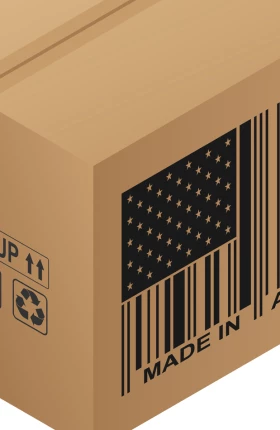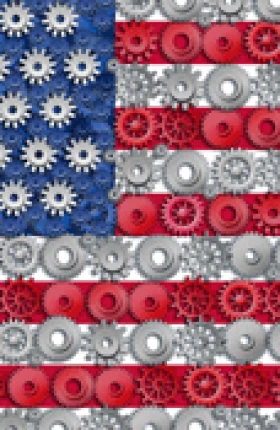Export manufacturing has been the unsung hero of the U.S. economy for the past few years. Despite all the public focus on the trade deficit, little attention has been paid to the fact that U.S. exports have been growing about three times faster than gross domestic product since 2005. As a share of the U.S. economy, in fact, exports are at their highest point in 50 years.
But this is just the beginning. New research from The Boston Consulting Group shows that U.S. exports are likely to surge in the foreseeable future. Before the end of the decade, we project that the U.S. will capture up to $130 billion in annual exports from other nations. Combined with production work that will likely be “reshored” from China, these higher U.S. exports could create 2.5 million to 5 million American jobs in factories and related services by 2020.
Why such optimism? Because the cost structure of manufacturing around the world continues to shift in America’s favor. On the one hand, the U.S. is steadily becoming one of the lowest-cost countries for manufacturing in the developed world. By 2015, the U.S. will have an export cost advantage of 5 to 25 percent over Germany, Italy, France, the U.K., and Japan. On the other hand, as we’ve explained in a previous BCG report , rapidly rising wages and other costs in China are eroding that country’s once-formidable advantage as an export platform for goods consumed in North America.
Our new research, part of BCG’s ongoing study of the changing global economics of manufacturing, focuses on U.S. cost-competiveness trends versus those in Western Europe and Japan. Developed nations account for around 60 percent of global manufactured exports. As a result of this new analysis, BCG has raised its estimate of U.S. job gains published earlier this year in U.S. Manufacturing Nears the Tipping Point: Which Industries, Why, and How Much? That report predicted the U.S. would gain 2 to 3 million jobs from higher exports and production work shifting from China to the U.S.
Most of the future export gains—up to $90 billion per year by our estimate—could come from production shifts from leading European nations and Japan to the U.S. BCG estimates that average manufacturing costs in 2015 will be 8 percent lower in the U.S. than in the U.K., 15 percent lower than in both Germany and France, 21 percent lower than in Japan, and 23 percent lower than in Italy. Among the biggest drivers of this advantage will be the costs of labor, natural gas, and electricity. As a result, the U.S. could capture 2 to 4 percent of exports from those four European countries and 3 to 7 percent of exports from Japan by the end of the decade.
Industries ranging from transportation equipment to chemicals will benefit from the expected export surge. It will be several years before the full impact of the cost shifts are reflected in increased U.S. output. But recent announcements by several large foreign manufacturers that they plan to use the U.S. as an export base for other markets give us confidence in our forecasts. For example, Toyota has announced it will export Camry sedans assembled in Kentucky and Sienna minivans made in Indiana to South Korea, while Honda and Nissan both say they expect to boost exports of vehicles made in their U.S. plants to the rest of the world. Siemens is building gas turbines in North Carolina to ship to Saudi Arabia for construction of a 4 gigawatt power plant. Rolls-Royce recently opened a new aircraft-engine-parts manufacturing facility in Virginia, citing low labor costs, high productivity, and dollarization.
We expect many more announcements like these over the coming years—because the cost advantages of producing in the U.S. are growing more compelling. Labor and energy costs will be especially important sources of U.S. competitive advantage in manufacturing. Average labor costs in the other big developed economies will be 20 to 45 percent higher than those in the U.S. in 2015 when adjusted for differences in worker productivity, which is considerably higher in the U.S. than in Europe and Japan. Only a decade ago, the labor of the same U.S. worker cost only 12 percent less than that of the average factory worker in Europe.
Inexpensive natural gas will also boost U.S. competitiveness. Thanks to the recovery of vast U.S. underground gas deposits in shale, for the foreseeable future natural gas is likely to remain 50 to 70 percent cheaper in the U.S. than in Europe and Japan. That will translate into significantly lower costs for electricity generation and for fuel used to power industrial plants. Cheap natural gas will also provide a big advantage to U.S.-based industries, such as chemicals, that use it as a feedstock.
Logistics and transportation costs are likely to further favor the U.S. as a global export base, especially in certain international trade lanes. In addition to lower U.S. labor and energy prices, it is 59 percent cheaper on average to ship goods from the U.S. to Japan than it is from Europe to Japan. That's because the U.S. is closer to Japan. And rates are much lower for containers departing U.S. ports, where there is significant overcapacity. Similarly, the U.S. will be a more attractive base than Japan for supplying many goods to Europe.
For most of the past four decades, manufacturing of all kinds has been migrating from high-cost nations to low-cost nations. Mainly, that has meant factory jobs going from the U.S. to abroad. We believe the pendulum is starting to swing—and in the years ahead it will be America’s turn to be on the receiving end.






